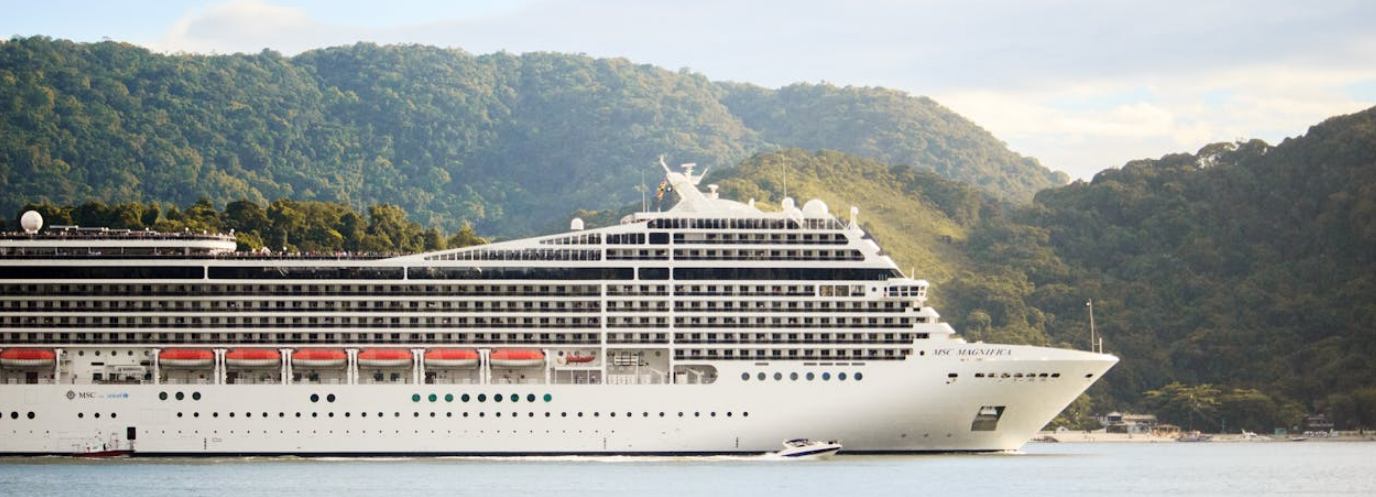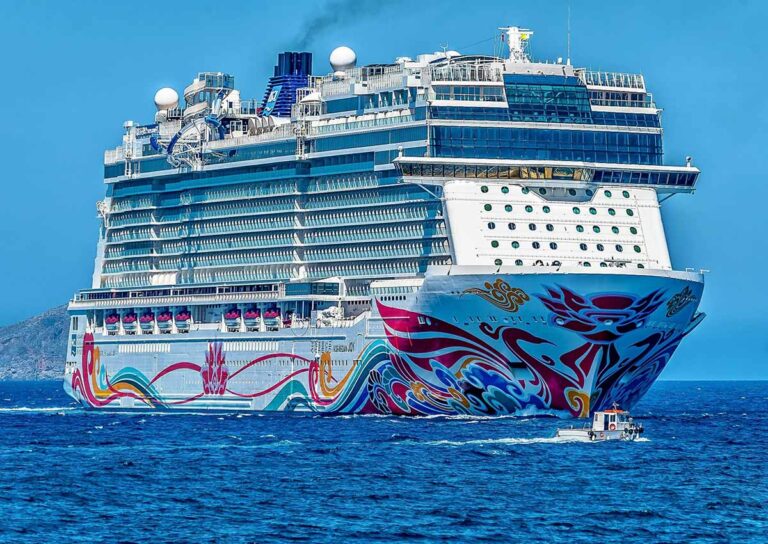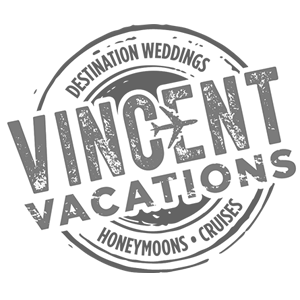Glossary of Cruise Terminology for Travel Agents
To learn more techniques and how to become a travel agent, sign-up to become a travel agent today!
Understanding cruise terminology is essential for travel agents to provide expert guidance. Cruises differ significantly from traditional vacations: fares may or may not include certain amenities, and the selection of dining times, cabin locations, and shore excursions can greatly impact a guest's experience. Agents who know the terminology can navigate these complexities, compare offers accurately, and advocate for their clients' best interests
Additionally, cruise lines often communicate important details, promotions, and policies using industry-specific language. Travel agents who are fluent in this language can efficiently access deals, avoid rookie mistakes, and resolve issues quickly, ultimately elevating the quality of service they provide to their client.
Travel agents must know cruise terminology because it enables them to communicate clearly and accurately with both cruise lines and clients, ensuring a smooth booking process and a better overall travel experience. The cruise industry uses a specialized vocabulary—terms like "port of call," "embarkation," "stateroom," and "shore excursion"—that can be confusing to newcomers. Mastery of this terminology allows agents to explain options, policies, and procedures to clients without misunderstandings, helping travelers make informed decisions about ships, cabins, itineraries, and onboard experiences

Glossary of Cruise Terminology
Aft
The rear (back) section of the ship. Cabins or lounges located here are often referred to as "aft-facing."
All-Inclusive
A cruise fare that includes most onboard expenses such as meals, drinks, gratuities, and sometimes excursions.
Atrium
The central, open area of a cruise ship, often spanning several decks and featuring glass elevators, lounges, or entertainment spaces.
Balcony Cabin/Stateroom
A guest cabin with a private balcony overlooking the ocean.
Beam
The widest part of the ship.
Berth
A bed in a cabin or the place where the ship is docked in port.
Bow
The front (forward) part of the ship.
Bridge
The navigational control center of the ship, where the captain and officers steer and manage the vessel.
Bulkhead
A wall dividing different sections of the ship, providing structural integrity and fire protection.
Cabin
A private room for guests or crew, also called a stateroom.
Cabin Categories
Designations for different types and locations of cabins, often using a combination of letters and numbers.
Captain
The highest-ranking officer in charge of the ship and its operations.
Crossing
A voyage across a large body of water, such as a transatlantic crossing.
Cruise Director
A senior officer responsible for all onboard entertainment and guest activities.
Cruise Tour/Cruisetour
A vacation combining a cruise with a land-based tour, either before or after the sailing.
Cruiser
A passenger or guest on a cruise ship.
Days at Sea/Sea Day
A day during the cruise when the ship does not stop at a port, allowing guests to enjoy onboard amenities.
Debark/Debarkation
The process of leaving or disembarking from the ship, usually at the end of the cruise.
Deck
A floor or level on the ship.
Deck Plan
A diagram showing the layout of cabins, public spaces, and amenities on each deck.
Departure Port
The port city where the cruise begins.
Deposit
An initial payment to reserve a cabin, with the balance due before sailing.
Disembarkation
Another term for debarkation; leaving the ship at the end of the voyage.
Dock
Where the ship is moored or tied up in port.
Dry Dock
A facility where ships are taken out of the water for maintenance, repairs, or refurbishment.
Duty-Free Shopping
Shops onboard or in port where goods can be purchased without paying local import taxes.
Embark/Embarkation
The process of boarding the ship at the start of the cruise.
Enrichment
Onboard programs offering educational lectures, workshops, or classes.
Excursion/Shore Excursion
An organized tour or activity at a port of call.
Family Cabin
A larger cabin designed to accommodate more than two guests, often with extra beds or sofa beds.
Formal Night
A designated evening when guests are encouraged to dress in formal attire for dinner and events.
Galley
The ship’s kitchen, where meals are prepared.
Gangway
The ramp or staircase used to board or leave the ship.
Godmother
A person, often a celebrity or dignitary, who ceremonially blesses a new ship at its inaugural voyage.
Gratuity
A tip or service charge, often automatically added to guests’ onboard accounts for crew services.
Guest Services/Purser’s Desk
The main reception area where guests can resolve issues, ask questions, or handle financial matters.
Helm
The area on the bridge where the ship is steered.
Home Port
The city where a ship is based and typically starts and ends its cruises.
Hull
The watertight outer shell of the ship.
Interior Cabin
A cabin located inside the ship without windows or a balcony.
Internet Café
A space with computers and internet access for guest use.
Internet Package
A pre-purchased plan for Wi-Fi access during the cruise.
Itinerary
The planned route and list of ports a cruise ship will visit.
Junior Suite/Mini-Suite
A cabin category larger than a standard stateroom, often with extra amenities.
Keel
The central structural base of the ship, running along the bottom from bow to stern.
Knot
A unit of speed equal to one nautical mile per hour (about 1.15 land miles per hour).
Leeward
The side of the ship sheltered from the wind.
Lido Deck
The deck featuring the main pool area, outdoor bars, and casual dining options.
Maiden Voyage
The first official sailing of a new ship.
Mid-Ship
The middle section of the ship, often considered the most stable area.
Muster Drill
A mandatory safety briefing where guests learn emergency procedures and the location of their muster station.
Muster Station
The designated assembly area for guests in case of an emergency.
Oceanview Cabin
A cabin with a window or porthole offering views of the sea.
Open Seating
A dining option where guests are not assigned a specific table or time for meals.
Onboard Credit
A credit applied to a guest’s onboard account, usable for purchases such as drinks, spa treatments, or excursions.
Owner’s Suite
The most luxurious and spacious accommodation on the ship.
Port
The left side of the ship when facing forward, or a destination where the ship docks.
Port of Call
A destination where the ship stops during its itinerary.
Port Charges
Fees assessed for docking at ports, usually included in the cruise fare.
Promenade
A public walkway, often on an exterior deck, where guests can stroll and enjoy ocean views.
Purser
A crew member responsible for financial transactions and guest services.
Repositioning Cruise
A one-way cruise that moves a ship from one region to another, often at the start or end of a season.
River Cruise
A cruise that takes place on rivers rather than the ocean, typically with smaller ships.
Roll Call
An online group or forum where guests on the same sailing connect before the cruise.
Sail Date
The date the cruise begins.
Sailaway
The event marking the ship’s departure from port, often celebrated with music and festivities.
Sea-Band
A wristband worn to help prevent seasickness using acupressure.
Segments
Sections of a longer cruise itinerary, allowing guests to book only a portion of the voyage.
Shore Excursion
See "Excursion."
Ship
A large vessel designed for deep-water navigation, carrying passengers and/or cargo.
Single Supplement
An additional fee charged to solo travelers occupying a cabin intended for two.
Spa
A facility onboard offering massages, beauty treatments, and relaxation services.
Specialty Restaurant
A dining venue offering cuisine not included in the standard fare, often for an additional fee.
Starboard
The right side of the ship when facing forward.
Stateroom
Another term for a guest cabin.
Stern
The rear (back) part of the ship.
Suite
A larger, more luxurious accommodation, often with separate living and sleeping areas.
Tender
A smaller boat used to transport guests from the ship to shore when the ship is anchored offshore.
Theme Cruise
A cruise centered around a specific interest or activity, such as music, food, or sports.
Tonnage
A measure of the ship’s internal volume, not its weight.
Towel Animal
A towel folded into the shape of an animal, left in guest cabins by housekeeping staff.
Transatlantic
A cruise that crosses the Atlantic Ocean.
Transfer
Transportation arranged as part of the cruise package, such as between the airport and the ship.
Veranda
Another term for a balcony attached to a cabin.
Wave Season
The peak period for cruise bookings, typically from January to March.
Windward
The side of the ship facing into the wind.
This glossary covers a wide range of cruise terms, from ship structure and accommodations to onboard experiences and nautical terminology, providing a comprehensive reference for both new and seasoned cruisers.
Learn more about this by signing up for one of our online trainings Learn More
To learn more techniques and how to become a travel agent, sign-up to become a travel agent today!






